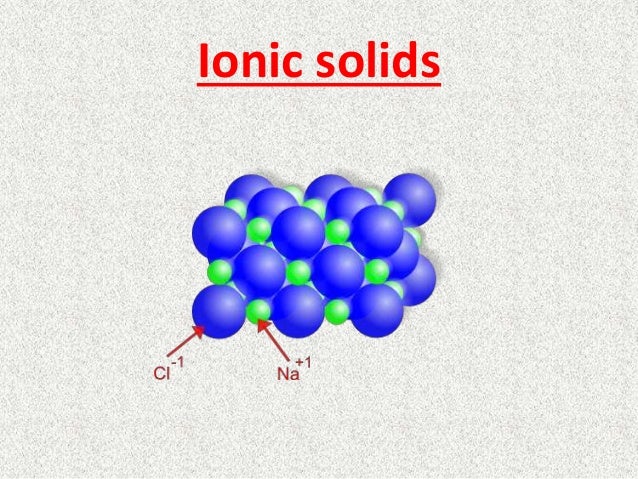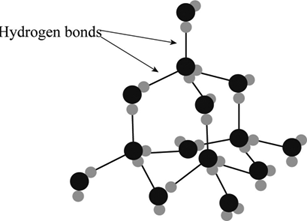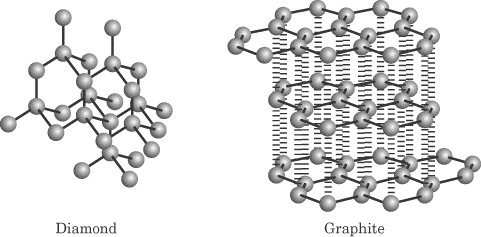(1.) आयनिक ठोस : सोडियम क्लोराइड व अन्य लवण ,धातु ऑक्साइड ,धातु सल्फाइड आदि आयनिक ठोस कहलाते है। क्योकि इन ठोसों के क्रिस्टल जालक धनायनों और ऋणायनों से बने होते है। आयनिक क्रिस्टल संरचना के कारण आयनिक ठोसों के गलनांक और कथनांक ऊंचे होते है।

(2.) आण्विक ठोस : आयोडीन ,गंधक ,सफ़ेद फॉस्फोरस आदि आण्विक ठोस कहलाते है। क्योकि इन ठोसों के क्रिस्टल जालक सरल अणुओ से बने होते है। आण्विक ठोसों के गलनांक और कथनांक नीचे होते है।

(3.) परमाण्वीय ठोस या जाल ठोस : डायमण्ड ( हीरा ),ग्रेफाइट ,सिलिका आदि परमाण्वीय ठोस या जाल ठोस कहलाते है। इन ठोस पदार्थो के क्रिस्टल जालक परमाणुओं से बने होते है। इन ठोसों के गलनांक और कथनांक बहुत ऊंचे होते है। जालक ठोस कठोर और द्रढ़ होते है।

(4.) धात्विक ठोस : जो ठोस धातुओं के गुण को प्रर्दशित करता है। धात्विक ठोस कहलाता है। धात्विक ठोसों में अर्थार्त धातुओं में जो बल धातु परमाणुओ को एक दूसरे से बांधे रखते है धात्विक बन्ध कहलाते है। धात्विक ठोसों का क्रिस्टल जालक धात्विक धनायनों से बना होता है जिसमे धातु परमाणुओं के संयोजी कोशो से निकले इलेक्ट्रॉन स्वतंत्रता के साथ एक स्थान से दूसरे स्थान पर निरन्तर गति करते है।

English Translation :
Types of solid materials: According to the nature of the existing bond between its constituent particles in a solid, there are four types of solids.
(1.) Ionic solids: Sodium chloride and other salts, metal oxides, metal sulfides etc. are called ionic solids. Because the crystals of these solids are made of cations and anions. Due to the ionic crystal structure, the melting points and statements of ionic solids are high.

(2.) Molecular solids: Iodine, sulfur, white phosphorus etc. are called molecular solids. Because the crystal lattice of these solids are made of simple molecules. The melting points and statements of molecular solids are below.

(3.) Atomic solid or mesh solid: Diamond (graph), graphite, silica etc. are called atomic solids or mesh solids. The crystals of these solid materials are made of lattice atoms. The melting points and statements of these solids are very high. Lattice solids are hard and hard.

(4.) Metallic solids: which reflect the properties of solid metals. The metal is called solid. In metallic solids, that is, in metals, the forces that bind metal atoms to each other are called metallic bonds. The crystal lattice of metallic solids is composed of metallic cations in which electrons emanating from the valence shells of metal atoms move continuously from one place to another.




No comments:
Post a Comment
if you have any doubts. please let me now